As the phases of our lives change, so too do our many needs and preferences—and that includes the companionship of little furry friends.
Pet ownership is ubiquitous in America, with some two-thirds of households boasting at least one dog, cat, rabbit, hamster, bird … well, you get the picture. While Millennials make up the largest share of pet owners, Gen X and Baby Boomers still account for significant slices of the pie. In other words, adults of virtually all ages see the benefits of pet ownership.
Still, people entering retirement usually face a serious decision about owning a pet. Longtime pet owners might need to consider whether they can still care for their pets, or whether they should give them a new home. Those who have never had a pet sometimes see retirement—and all of that newfound time—as the perfect opportunity to get a new cat or dog because they can give them the attention they deserve.
Today, I’d like to help you make your decision by providing some of the most poignant pros and cons of pet ownership for retirement-age adults. Older adults often enjoy incredible health and mental benefits when they own a pet. But the decision to become a pet owner shouldn’t be made lightly—there are several reasons why retirement is a less-than-ideal time to take on an additional responsibility.
Table of Contents
Pet Ownership in Retirement: The Pros

Pet ownership can benefit you mentally, emotionally, even physically. These advantages have made themselves evident time and time again through scientific studies, survey results, and personal anecdotes. And some of these advantages are even more important for older adults.
Let’s start by going over some of the most noteworthy reasons why retirees should consider getting (or keeping) a pet.
1. Pets Reduce Loneliness

Loneliness is a scourge—one that particularly weighs on people as they get older.
The 2023 University of Michigan National Poll on Healthy Aging surveyed American adults ages 50 to 80 about loneliness. Around one-third of respondents (34%) admitted to feeling isolated from others, and 37% reported feeling a lack of companionship.
Retirement can contribute to loneliness. Some retirees go from being surrounded by people five days a week to seeing people much less frequently.
Fortunately, studies show that pet ownership is associated with lower levels of social isolation. Not only can pets themselves provide companionship, but especially social pets can help you meet other people. For example, dog owners frequently strike up conversations on walks and hikes while their pets interact.
Related: 5 Best Fidelity Retirement Funds [Low-Cost + Long-Term]
2. Pets Reduce Stress
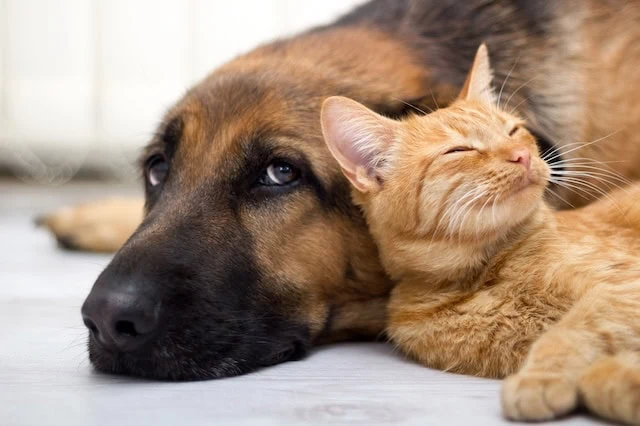
Pets can be an excellent stress reliever, too.
In a 2022 American Heart Association Pets Survey, 95% of respondents said they rely on their pets for stress relief. The most common reasons given for how pets help eliminate stress are through cuddles, making owners laugh, and reducing overall loneliness.
Simply petting a dog can lower cortisol (a stress hormone) while increasing oxytocin (literally known as the “love hormone” and helps humans bond to one another). Studies suggest service dogs can even decrease symptom severity for people with post-traumatic stress disorder (PTSD).
Related: Do I Need a Financial Advisor? 7 Questions to Ask Yourself
3. Pets Can Slow Mental Decline

Your pet might be clever … but it also might be keeping you every bit as clever.
The American Academy of Neurology conducted a study of older adults with normal cognitive skills and an average age of 65. Just more than half of participants (53%) were pet owners; around one-third (32%) owned a pet for five years or more. The adults took multiple cognitive tests over the years, and they were given a composite cognitive score.
Over the course of six years, the cognitive scores decreased at a lower rate for people with pets, and it decreased the slowest for long-term pet owners.
The takeaway: Pets can keep you mentally sharp.
Related: 15 Alarming Gen X Retirement Statistics
4. Pets Help You Stay in a Routine

If you own a cat or dog, you might not even bother owning an alarm clock. Pets will make sure you’re awake (too early), let you know if it’s past time for one of their meals, and let you know when it’s time to get to bed so they can sleep on your chest.
In short: Pets can help you keep a general routine, and that’s actually good news for your health.
Northwestern Medicine writes that routines can help you eat healthier, stay active, and sleep better. And researchers at the University of Pittsburgh discovered that older adults (age 65+) who have more volatile schedules have “depressed mood levels,” “greater guilt levels,” and “greater suicidality levels” than people who develop routines and are active each day.
Related: 5 Best Schwab Retirement Funds [High Quality, Low Costs]
5. Some Pets Keep You Physically Active

Fewer than 15% of Americans ages 65 and older get the recommended amounts of aerobic and muscle-strengthening exercise suggested by the second edition of the Physical Activity Guidelines for Americans, according to the U.S. Department of Health and Human Services.
Sure, a pet turtle won’t necessarily jump-start your exercise routine. But a hyperactive dog? Yeah, that kind of pet will keep you on your feet.
In a survey conducted by OnePoll, on behalf of dog food company Orijen Amazon Grains, some 70% of respondents said they’ve become physically healthier since getting a dog. A similar number (68%) said they “hated” exercising before they got a dog.
Research seems to back up these surveys. The study “Examining the Contribution of Dog Walking to Total Daily Physical Activity Among Dogs and Their Owners” used accelerometers to monitor dog owner-dog pairs. The results showed that dog walking accounted for more than half of the owners’ daily moderate-to-vigorous physical activity.
And a 2023 meta-analysis of 49 qualifying studies, published in Frontiers in Public Health, found that pets have a “moderately significant positive effect on the physical activity” of pet owners, compared to people without pets. (Said otherwise, pet owners tend to be physically active more frequently than non-owners.)
If you’re looking to get more physical activity into your daily routine, an active animal could be the motivation you need.
Related: Should Retirees Move? 10 Considerations
Pet Ownership in Retirement: The Cons

Pet ownership can be wonderful, but it isn’t without its share of challenges. Pets require energy, space, and financial resources. And while they can provide health benefits for some people, others might find furry friends to be detrimental to their health.
Here are some reasons why caring for pets could actually be a poor decision for some retirees.
1. Pets Can be Expensive
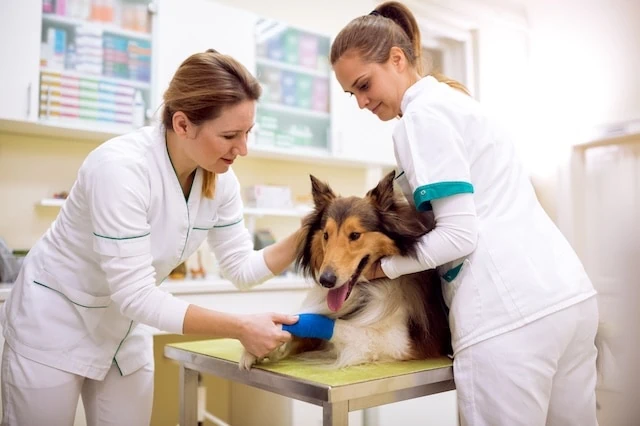
Pet expenses can vary substantially depending on the animal you have, whether they have minor or major health issues, and how much you want to spoil them. Still, it can be useful to get a general sense of costs before diving in.
Let’s consider two of the most popular pets.
A MetLife survey found that in 2023, owners of cats and dogs spent an average of $4,800 on their pet. Some of the highest costs were veterinary visits (averaging $1,242), treats (averaging $645), food (averaging $633), clothes (averaging $598), and toys (averaging $585).
While not all of these items are necessities (no, your dog doesn’t need another tutu), the costs can still add up—particularly if your pet has, or is likely to develop, any health issues.
If you’re already on a very tight budget, a pet could add more financial strain.
Related: How to Invest HSA Funds [Level Up Your Retirement Savings]
2. Pets Can Make It More Difficult to Go on Vacations
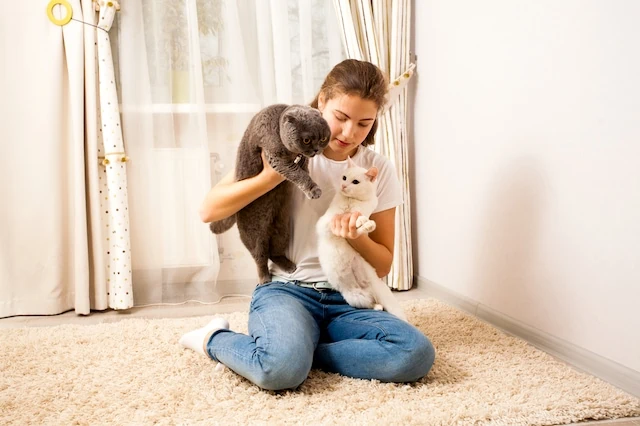
Many people look forward to retirement because it unshackles them from the constraints of a full-time job, which gives them more time to travel.
The Transamerica Institute is a nonprofit that researches “retirement security and the intersections of health and financial well-being.” According to the institute’s 2023 retirement survey, traveling is the most commonly cited retirement dream by both workers aged 50-plus (65%) and retirees (60%).
Unfortunately, pets can complicate your retirement travel plans.
In a Forbes Advisor survey of 10,000 American dog owners, 37% of respondents said that finding a pet sitter when traveling was the most annoying part of having a dog. Of course, many people just bring their dogs with them—82% reported that they sometimes travel by car with their dogs, and 33% said they sometimes bring them by plane.
Bringing a pet on your travels can be challenging and stressful. Paying for boarding or a pet sitter can be pricey. So while it can be done, having pets makes it more difficult to travel often.
Related: Best Vanguard Retirement Funds for a 401(k) Plan
3. Space Limitations

While many older adults have enough room for a pet, some people downsize during retirement—and doing so might leave them with insufficient space.
According to the Transamerica Center for Retirement Studies’ 2023 report Life in Retirement: Pre-Retiree Expectations and Retiree Realities, over one-third (37%) of retirees move to a new home during retirement. Among movers, nearly one-third (27%) cite their reason as downsizing to a smaller home.
How much space a pet needs varies, but even small animals need a minimum amount of room to roam. For example, Purina recommends having at least 20 square feet (which can be across various rooms) for a cat to wander.
Some elderly adults might move to senior or assisted living facilities, which can be on the small side, too. Some may permit pets, but the resident is typically required to provide full care, and there might be restrictions on weight and breed.
No matter your situation, you don’t anticipate having much room during retirement, a pet may feel cramped.
Related: 9 Financial Mistakes That Can Quickly Drain Your Retirement Savings
4. Physical Limitations

Although pets can help older adults stay active, elderly people still often have physical limitations, which can make it challenging to care for pets. Stray toys, slippery floors from bathroom accidents, and small pets themselves can be tripping hazards.
The Centers for Disease Control and Prevention (CDC) reported that in 2021, “emergency departments recorded nearly 3 million visits for older adult falls.” And emergency falls among seniors ages 65 and older resulted in more than 38,000 deaths that year.
Even if pet owners don’t trip, it can be difficult for people with mobility issues to carry heavy bags of food, frequently vacuum up pet hair, and execute all the other physical activities associated with pets.
Many of these concerns can be mitigated by strategically choosing which type of pet to get. Still, elderly adults with severe mobility challenges might want to reconsider whether pet ownership is worth the risk.
Related: How Much Should I Save Each Month?
5. Allergies

Allergies can change over throughout a person’s life. Unfortunately, for some, allergies worsen with age, and some people even develop new allergies in adulthood.
So, an adult might currently have very mild pet allergies that are easily kept at bay through hair and dander removal. However, if their immune system weakens as they age, their allergies might intensify and their symptoms might worsen.
While there are always ways to reduce allergy symptoms, those methods might not provide enough relief. The American Lung Association says the best way to manage a pet allergy is to reduce exposure, and for some retirees, that might mean making the difficult decision not to have pets anymore.
Related: Best Schwab Funds to Hold in an HSA
Related: 11 Ways To Avoid Paying Taxes on Your Social Security
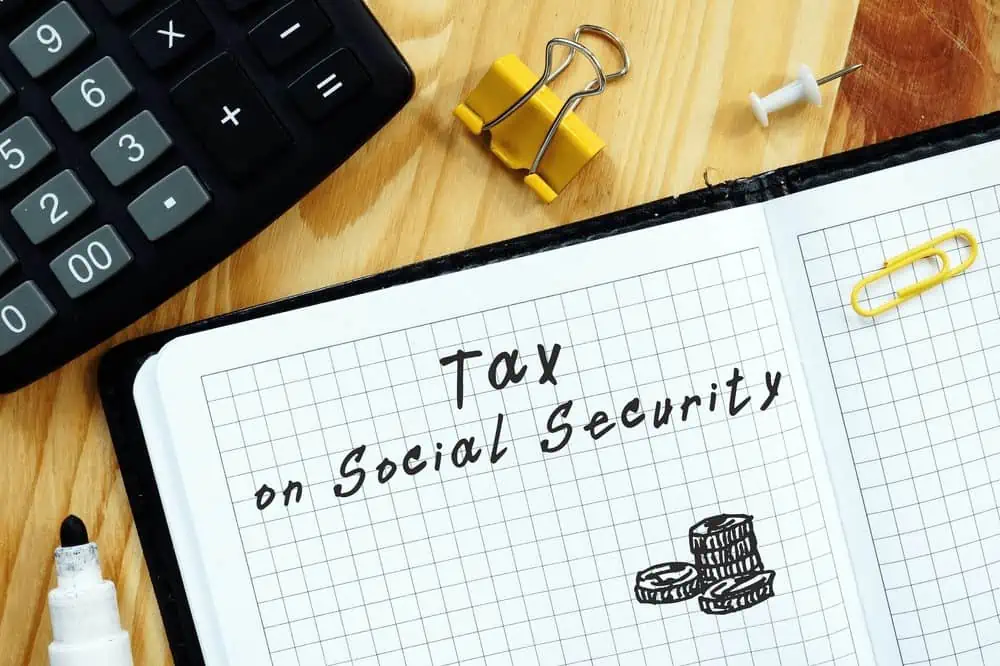
If you’re looking to minimize the tax bite taken out of your Social Security benefits in retirement, you’ve got several available actions to reduce how much you pay each year. We outline several ways to avoid paying taxes on your Social Security benefits.
Related: How Are Social Security Benefits Taxed?
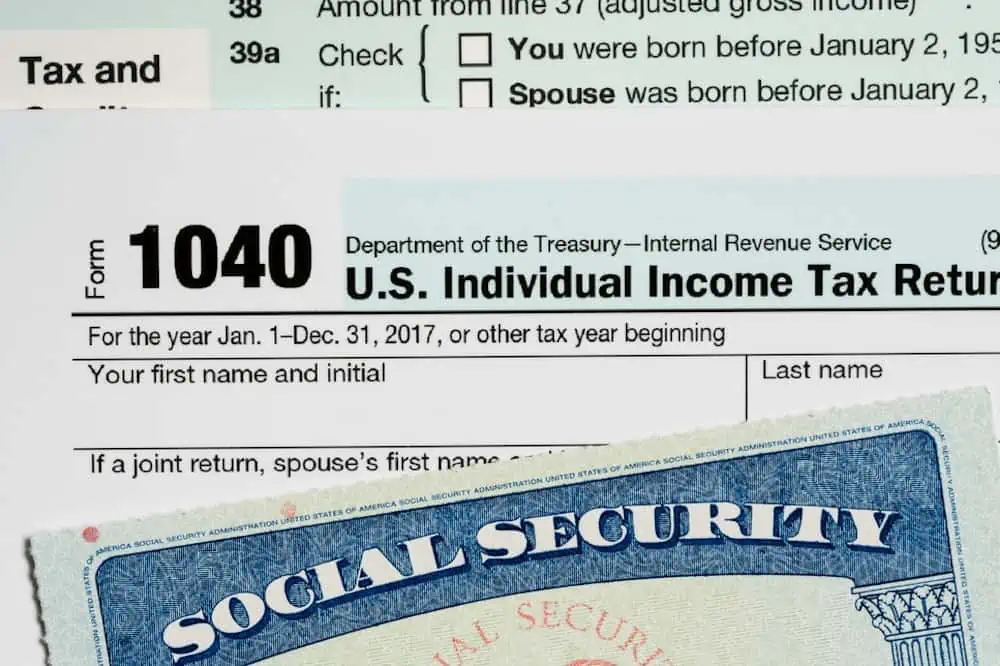
In many cases, Social Security benefits are subject to federal taxation. To learn how your Social Security benefits are taxed, we’ve got an entire guide to walk you through the calculation.
Related: 10 States That Tax Social Security Benefits

While most states don’t subject Social Security benefits to taxation, at least 10 states do tax Social Security. To see if you live in one of them, or you’re considering a relocation for retirement and taxation of your Social Security is a sticking point, we’ve got you covered with all of the details.
Related: 9 Best Monthly Dividend Stocks for Frequent, Regular Income

The vast majority of American dividend stocks pay regular, reliable payouts—and they do so at a more frequent clip (quarterly) than dividend stocks in most other countries (typically every six months or year).
Still, if you’ve ever thought to yourself, “it’d sure be nice to collect these dividends more often,” you don’t have to look far. While they’re not terribly common, American exchanges boast dozens of monthly dividend stocks.
Please Don’t Forget to Like, Follow and Comment

Did you find this article helpful? We’d love to hear your thoughts! Leave a comment with the box on the left-hand side of the screen and share your thoughts.
Also, do you want to stay up-to-date on our latest content?
1. Follow us by clicking the [+ Follow] button above,
2. Subscribe to The Weekend Tea, our weekly newsletter to read more about investing, spending, taxes, and more, and
3. Give the article a Thumbs Up on the top-left side of the screen.
4. And lastly, if you think this information would benefit your friends and family, don’t hesitate to share it with them!





